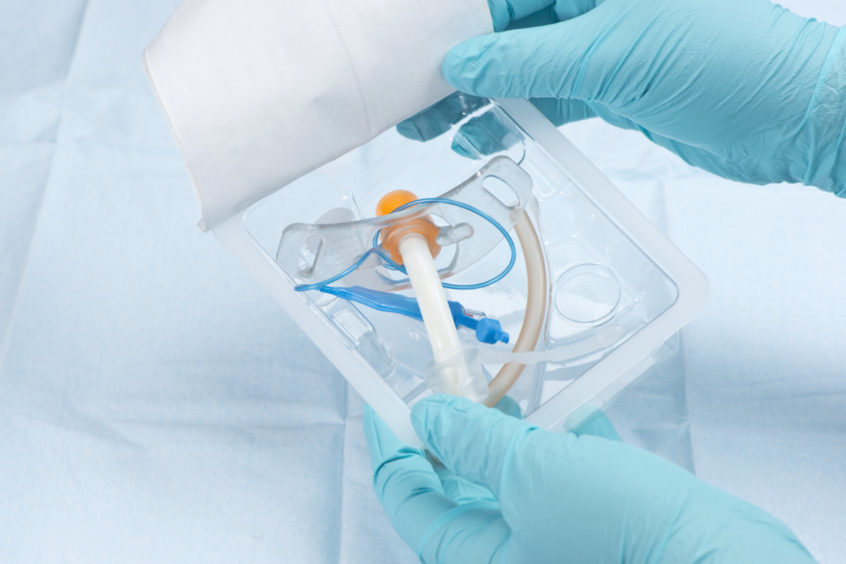There are three main types of packaging – primary, secondary, and tertiary – and it is important to understand that all levels of packaging serve specific purposes with specific requirements, in order to get products to people safely, efficiently, and consistently. Primary packaging is what directly encases and contains the drug product. Secondary packaging is the exterior packaging of the primary packaging that groups packages and further protects or labels the drug product. Tertiary packaging is used for bulk handling, storage, and distribution. An example of these packaging levels in the pharmaceutical industry is a vial or blister (primary packaging) placed into a carton (secondary packaging), then packed into a shipping case (tertiary packaging). This article will focus on secondary packaging and the importance of selecting a supplier who is well equipped to handle a product’s unique and customized packaging needs.
Secondary packaging is important for several reasons, including physical and barrier protection, secondary containment, adherence to regulations, and safety to the patient. Common types of secondary packaging include cartons, trays, and film bundles. Although secondary packaging can take on a variety of forms, it will always contain a level of packaging within it (primary packaging). Typically, the level of packaging a consumer will see first is secondary packaging; this makes the appearance of secondary packaging very important.
Secondary packaging for clinical trials can take on a number of forms, depending on the primary package it will house. One common primary package used in the pharmaceutical industry is known as a blister strip. Blister strips are essentially two layers of material sealed together with a cavity between the layers for the product. The easiest way to group these blisters together, prevent tampering, and provide the patient with instructions is to contain the blisters in a secondary wallet or blister card. These wallets allow for more printing capability, they can hide batch numbers and can be arranged to match the dosing schedule the patient will be adhering to. Similar to blisters, wallets are, in essence, two pieces of material sealed together. Rather than containing drug product between the layers, the primary packaging (in this case, the blister) is between the layers.
Another example of secondary packaging used in both clinical trials and commercial products is a carton. Folding cartons like shipping cases are made of relatively thin paperboard instead of cardboard. The thinner board is strong and allows for tighter and cleaner folds, a better printing surface, and an overall smaller footprint. Folding cartons can house a variety of different primary packages. Cartons can hold blisters, vials, bottles, or really any form of primary packaging that will fit inside. Cartons are beneficial for clinical work as they can be printed on while in-process, they can be labeled, and they will typically resemble the final commercial packaging configuration the client has in mind. For the same reasons, cartons are also great for commercial packaging. Artwork can also easily be pre-printed on cartons, making them a popular choice for almost all secondary packaging applications.
Secondary packaging plays a huge role in distribution, display, and branding. During distribution, secondary packages protect the primary packages and the product. Imagine a glass vial; if these primary packages are packed directly into their shipping cases, they will likely break during transport. Secondary packaging creates a buffer, protecting primary packages from one another. It allows for a shipping case to be fully filled, so products do not shift during shipment. The geometric nature of cartons allows for the tertiary package to be a tight fit. Cartons are also easier to handle than vials, so packing or unpacking of shipping containers can run more smoothly than a configuration with no secondary packaging.
Although a major benefit of secondary packaging is transport, it plays a more direct role on a daily basis – primarily, the protection of the product and primary package. Because secondary packages are often handled by consumers, they must protect the product in the event the consumer mistreats the package. Mistakes happen, and a customer may accidentally drop and shatter a primary package, like a glass vial. When a glass vial is housed in a folding carton, it significantly decreases the chance that the primary package or product will be damaged.
Cartons also have a major impact on branding and product display. Using a vial and carton configuration as an example, the carton is typically the smallest sellable unit. This means the purchaser will see the carton and not necessarily see the vial. Because cartons are the “product” seen on shelves, branding, artwork, and regulatory information are crucial for secondary packaging. Secondary packaging typically has much more room for branding, artwork, and regulatory information than the primary packaging within it, and is often the point of purchase display a consumer sees. Paperboard is a great substrate for printing, meaning that the smearing or smudging of print on cartons is rare. When a customer walks into a store, they are able to hold the carton and view the branding on the secondary package. As with branding and artwork, secondary packages are used to display required regulatory information. Since regulations can vary depending on the product, secondary packaging provides ample space to print required regulatory information and variable text, such as lot and expiration.
Alcami has broad experience using secondary packaging to overcome complications and aid in compliance during clinical trials. One client, for example, used patient-specific labeling on two bottles that needed to stay together throughout the lifecycle of the product. “Bottle A” and “Bottle B” were both assigned to “patient #1234,” and the two bottles needed to be contained in a single package for the patient to avoid confusion or error. Alcami made it easy to get the correct bottles into the hands of the correct patients by using a carton with room for two bottles as a secondary package. The carton allowed for a patient-specific label to be applied, matching the patient records on the bottles’ labels. Additionally, because the carton contained two unique bottles, it was extremely unlikely a patient would accidentally receive two “A” bottles or two “B” bottles.
Summary
Alcami utilizes various forms of secondary packaging, most commonly a folding carton. Other common forms include wallets for blister packages and shrink-wrapped bundles for bottled products. To support expanded regulatory requirements, Alcami has recently implemented serialization equipment for both its bottle and carton lines. This allows the printing of serial numbers on these secondary packages. An in-line bundler was also qualified for the secondary packaging of bottles. No matter the configuration, Alcami is committed to providing solutions for all of our clients’ secondary packaging needs.

